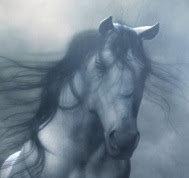Eh-hem.
So I wanted to edgumacate you dear readers on members of our wonderful planet that you may not necessarily be aware of. I’m not talking about the Hollywood stars of the animal kingdom, no tigers or lions or giant pandas. Infact very few fluffy things (although there are some with some fantastic noses that I shall be talking about). Here I will pay homage to the ugly ducklings of the natural world, the squealy, slimey, wriggly little beasties that lack the, ability shall we say, to appeal to the general public.
So, without further ado, I give you our first wee beastie! Actually he isn’t very wee, but check out this head!

This, simply marvellous thing, is the Chinese Giant Salamander (Andrias davidianus)
It is the largest salamander in the world, reaching up to 1.8 metres in length. In the wild, these terribly ugly creatures are aquatic, living in streams and brooks in the Chinese mountains. Their skin is generally dark brown / green in colour, and is porous. It is through their skin that these animals breathe, as they lack any gills. This accounts for their wrinkled appearance, as wrinkles offer a larger surface area through which gaseous exchange can take place.
I almost sound intelligent don’t I.
These giant amphibians are more active at night, when these use touch and smell to locate their prey. They hunt small aquatic creatures such as crayfish, snails, other salamanders, and worms which they locate using the sensory nodes on their head and body which detect changes in water pressure, and they catch their prey with a fast sideways snap of their jaws.
When it comes to the birds and the bees, mating behaviour is only guestimated for the Chinese salamander. The Japanese giant salamander has been observed, and it is thought that the behaviours are similar. Males (as they are want to do) ferociously guard underwater breeding cavities (like inside a fallen log), inside which a female will lay up to 500 eggs that are held together like a thread of beads.
This is what the eggs might look like, although this piccie
is from a smaller salamander species, but you can see the string of beads.

The male fertilises the eggs and is responsible for their protection, the female plays no role after she lays (hah!). Around 15 weeks later teeny tiny little replicas of the adults hatch, although the babies start off with gills which disappear over time.
This species is very long lived, with one captive individual reaching 52 years in captivity.
Unfortunately, this highly enigmatic species (I am sure you will agree with me on this) is highly endangered, primarily (surprise, sur-bloody prise) because their flesh is considered to be a delicacy by the Chinese population. Habitat alteration has also taken its toll, resulting in smaller populations, fragmented populations, and smaller individuals as a result of over collecting. Very few of these magnificent beasts, if any, will reach that 1.8 metre target.
The zoological society of London is so concerned about the status of this amphibian, that it has included it in its EDGE of existence program for amphibians. This conservation initiative focuses on the world’s most evolutionarily distinct and globally endangered species.
The Chinese Salamander is included in this programme not only because of its decline in numbers, but because it is thought to have evolved independently from all other amphibians over 100 million years before Tyrannosaurus rex. Think about that for a moment; this animal, which has been evolving independently for 168 million years, is about to disappear from this earth because we think it tastes good. This unique snapshot into amphibian evolution could be gone without anyone even realising.
I think this is tragic. Not only for the evolutionary information that this lineage could expose (they are working on it now, for goodness sake, this is cutting edge science here!) but I really don’t think we have the right to wipe something off of this earth that clearly has a lot more right to be here than we have! Its 168 million years old! Its a snapshot of our earth’s history! The relationship between it and its environment has become so, complex, so cemented, so, together! Its an ecological marvel!
So there we have it ladies and gents, I give you the Chinese Giant Salamander! I for one hope it continues to evolve for another 168 million years, and that it stays this ugly....


Fantastic! Love the pics, Squishy is very cool. Looking forward to the next biological episode!
ReplyDelete